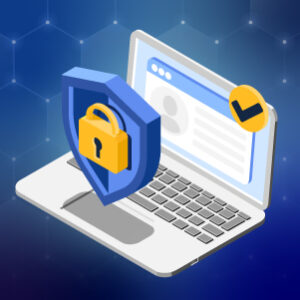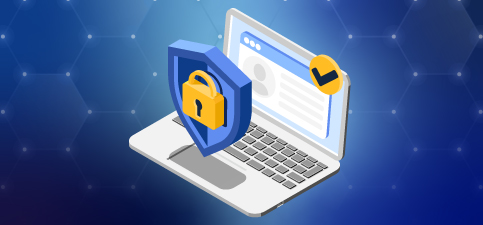Endpoint visibility is vital to security. With the constantly changing IT environment and the normalization of remote work environments, securing and maintaining all company endpoints has become more of a challenge. However, with proper monitoring, improved security and Data Loss Prevention (DLP), agencies are able to ensure security for their sensitive data and information.
Proper Monitoring in a Network
Visibility and monitoring are important security prevention measures for every organization. Because weak endpoints are the most likely cause of successful security breaches, monitoring company endpoints is essential to catching security threats. While a study by the IDC found that open endpoints were the cause of 70% of successful breaches, only an estimated 30% of IT admins had a firm grasp of the number of endpoints in their organization, according to another study by Central. Since bad actors are able to compromise and utilize devices, knowing how an endpoint usually behaves can alert administrators about potential security breaches. With this knowledge, hacking can be detected before major damage is done on a network. Running scans on all endpoints in a network can also help detect threats. Knowing the number of endpoints within a network, monitoring devices installed and keeping up with system updates can aid in keeping track of endpoints.
 Improving Security for All Workplaces
Improving Security for All Workplaces
As workplaces move to a more flexible schedule where employees are able to work hybrid, organizations have gained higher productivity and lower costs. However, the remote workplace environment has led to a greater reliance on mobile devices, home computers and laptops that need to connect to company networks to conduct business. Employees will incorporate personal devices to their workspace. Many of these devices are several years old or unpatched and will need to be added to the network infrastructure. As a result, it is no longer feasible for agencies to be built around granting each individual endpoint access to the system network. Ransomware attacks can cause organizations hours of downtime and millions of lost earnings. Because open endpoints are easy targets for bad actors, utilizing software to manage and protect them is nearly a requisite. There are an array of tools that aid in endpoint visibility, but all will have similar functions.
These processes should include, but are not limited to:
- Threat detection and the ability to match known malware signatures with ones in the software.
- Sandboxing: The practice of running tests for malicious behavior.
- Behavioral analysis: Detecting anomalies in an endpoint and reporting those to the network administrator.
- The ability to blacklist unsecured applications and pages.
- Patch Management: Application updates to automatically repair weak points in the system.
- Server security and the automatic blocking of threats from external sources.
- Data Loss Prevention
Data Loss Prevention’s Aid to Endpoint Visibility
Data Loss Protection is an indispensable part of endpoint visibility. It prevents users from uploading, copying, or trafficking data outside of an accepted database or network. As a result, DLP protects sensitive data by preventing information from leaving networks without administrator permission. However, to implement DLP, organizations must know what data is located on their endpoints and how this data moves between endpoints. This way, they are able to detect any unusual behavior.
Security risks for networks without DLP:
- Data loss
- Compromised data
- Revenue loss
- Inefficiency
Benefits of implementing DLP:
- Improved security
- Data classification
- Privileged user control
- Network access control
- Compliance with security practices
- Endpoint encryption, detection, and reports
- Prevents sensitive information from leaving network without permission
- Time and money saved on hiring professionals to help detect security threats or to update security systems
Data Loss Prevention is especially important to government agencies with sensitive information. To prevent information from being compromised, DLP will give administrators visibility and control to cloud access. This allows administrators to execute executive command remotely, in a simple way that removes the need for maintenance and connection issues. With this visibility, network administrators can monitor endpoints for unorthodox activity and behavior.
Securing Endpoint Visibility
With the constant evolution of workplace environments and technology usage, endpoint visibility has become integral to every organization that deals with sensitive information. Monitoring networks allow system administrators to discern potential breaches. By keeping track of the number and type of endpoints, keeping up with system updates and implementing DLP, network administrators can ensure that their systems are secure.
Visit Carahsoft’s robust community of vendors in cybersecurity to learn more about Carahsoft can support your organization’s endpoint visibility mission.







